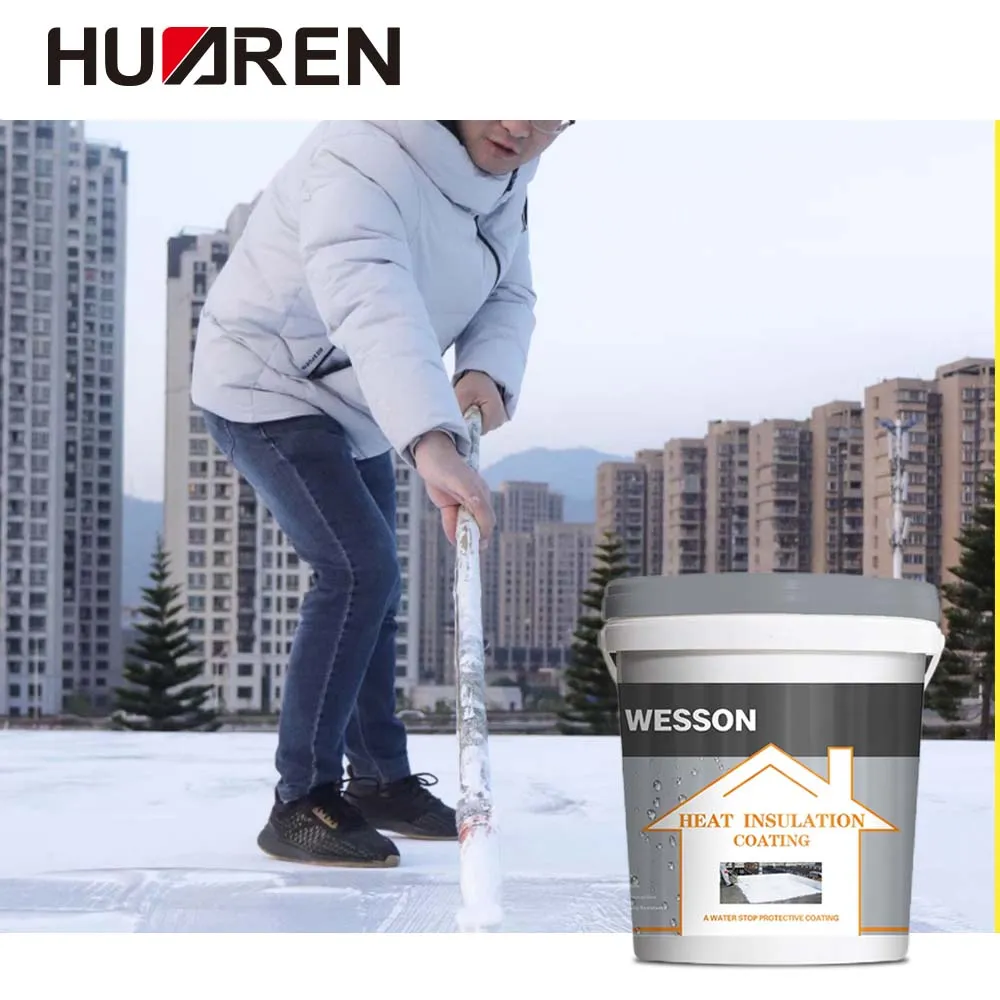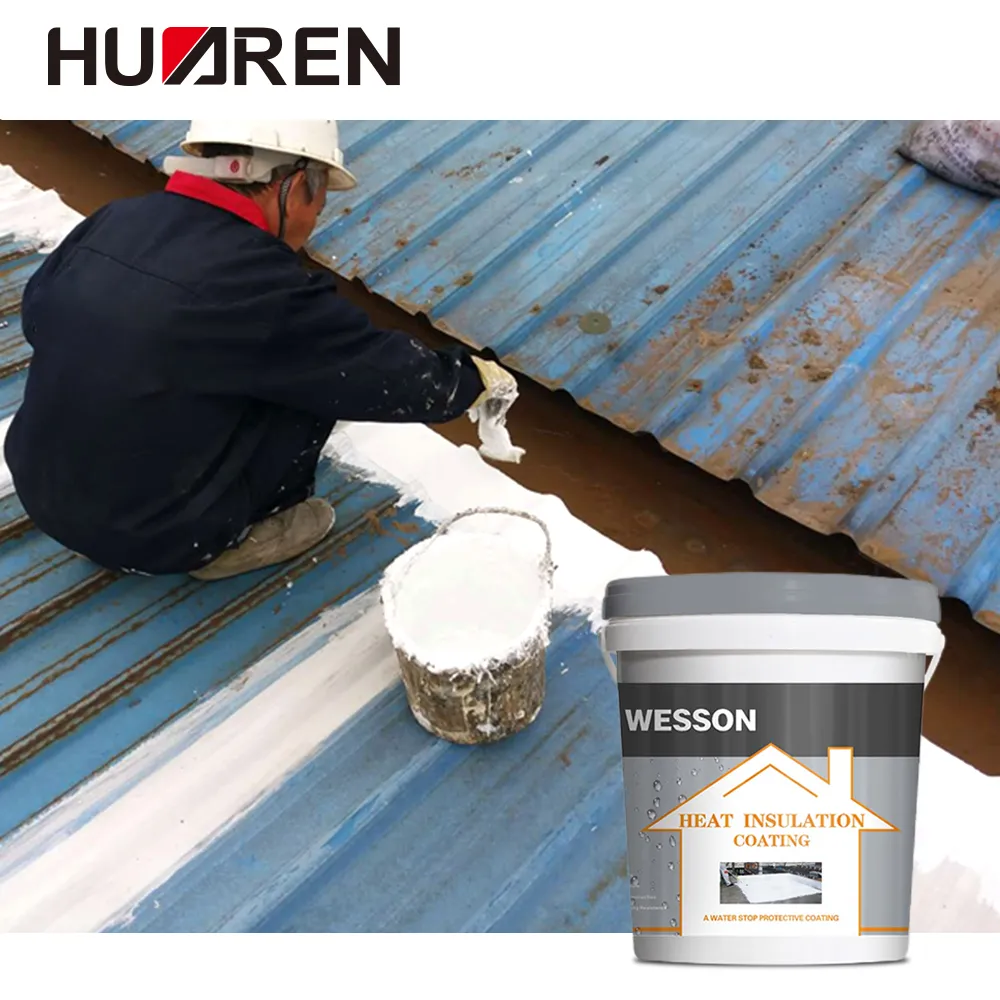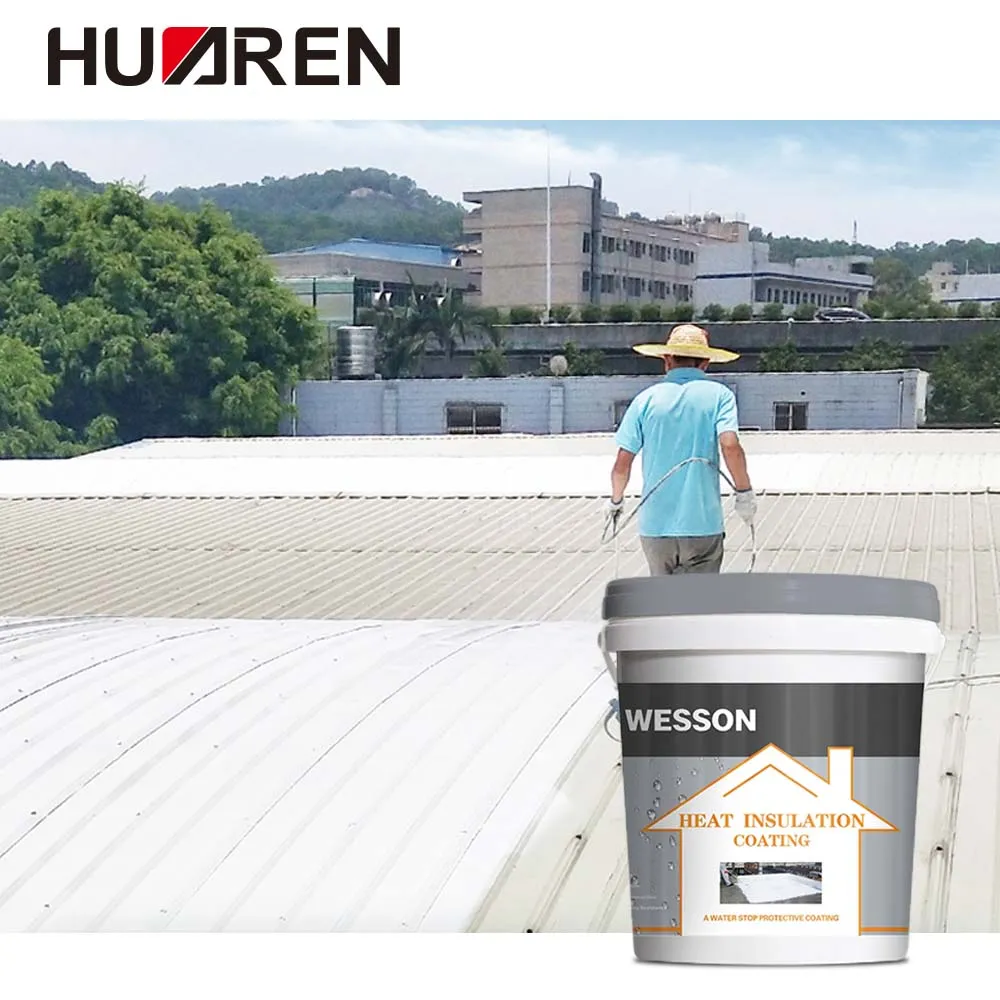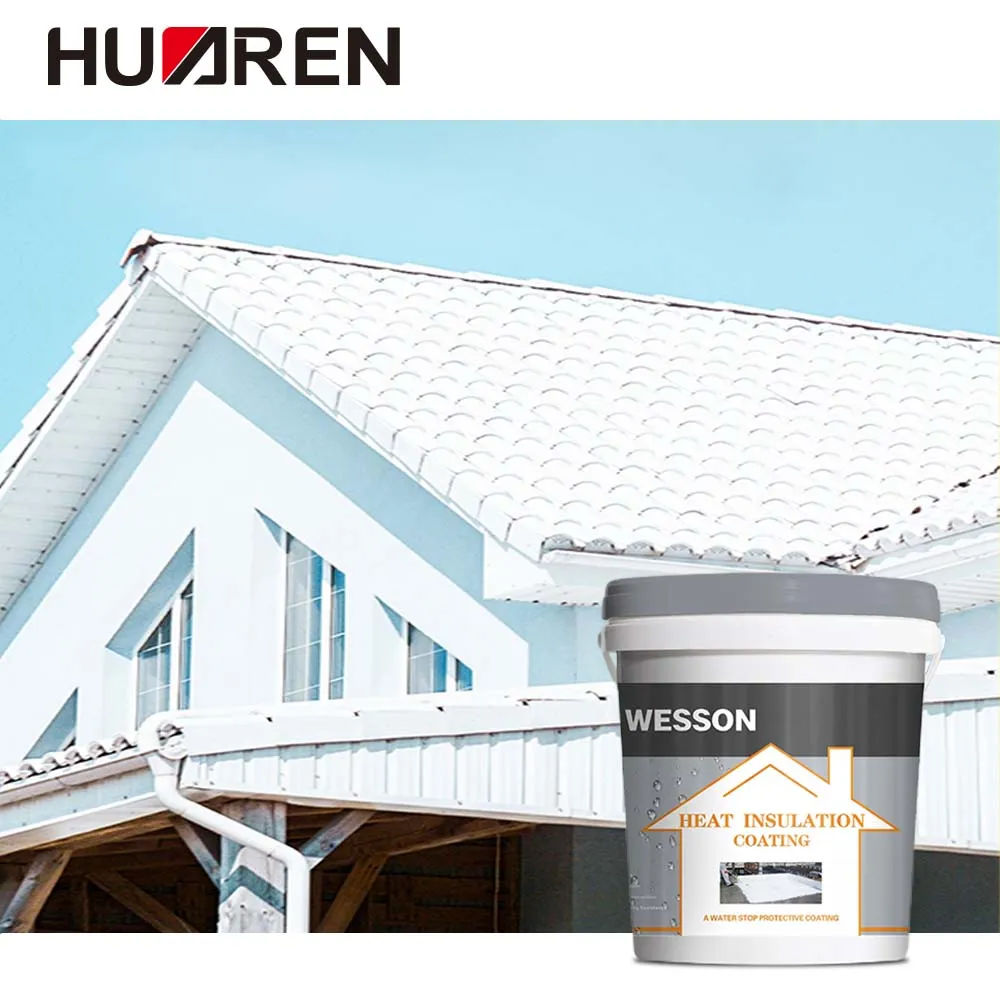As an innovative roofing protection material, liquid rubber roof coating has gradually become a widely used roof protection coating in residential, commercial buildings and industrial facilities. Compared with traditional roof waterproofing materials, liquid rubber roof coating has seamless construction and strong adhesion, can effectively cope with various severe weather conditions, and greatly extend the service life of the roof.

What is liquid rubber roof coating?
Liquid rubber roof coating is a liquid coating with a special formula. After construction on the roof surface, it can form a waterproof membrane with strong elasticity and good crack resistance. It is widely used for waterproofing, moisture-proofing, anti-corrosion and heat insulation of building roofs, balconies, basements and other parts. Its main ingredients usually include high molecular polymers, fillers, additives and some other chemical components. After professional proportioning, it has excellent physical and chemical properties.
Compared with traditional roof coatings such as asphalt, polyurethane or cement, liquid rubber roof paint can not only provide excellent waterproof function, but also has multiple advantages such as strong UV resistance, acid and alkali resistance, high temperature resistance and low temperature resistance. It has good fluidity and can be easily applied to every corner of the roof to form a complete seamless coating, avoiding the leakage problem that may occur in the joints of traditional roofing materials.

What are the ingredients of liquid rubber roof coating?
Liquid rubber roof coating is usually composed of several main ingredients, including polymers, solvents, fillers and additives. Each ingredient plays a different role in the formula, which together give liquid rubber roof paint excellent performance.
·Polymer: The core component of liquid rubber roof coating is polymer, which usually uses synthetic rubber or other polymer materials (such as chloroprene rubber, butyl rubber, fluororubber, etc.). These polymers can give the coating excellent elasticity and weather resistance, enabling it to adapt to various extreme weather conditions such as temperature changes on the roof, wind and sun.
·Solvent: Solvents are used to dissolve the various components in the coating to facilitate its construction. Common solvents include water, alcohol solvents and aromatic solvents. The selection of different solvents will affect the consistency, drying time and construction method of the coating.
· Filler: Fillers are mainly used to improve the physical properties of coatings. Common fillers include talcum powder, titanium dioxide, calcium carbonate, etc. The addition of fillers helps to enhance the adhesion, wear resistance and UV resistance of the coating.
· Additives: In order to improve the characteristics of liquid rubber roof paint, some additives are often added, such as plasticizers, antioxidants, UV inhibitors, etc. These additives can enhance the coating's anti-aging, anti-corrosion, anti-freezing and thawing capabilities, thereby extending the service life of the roof coating.

What are the advantages of liquid rubber roof coating?
Advantages of liquid rubber roof coating:
1. Excellent waterproof performance
2. Excellent elasticity and crack resistance
3. UV resistance and anti-aging
4. High temperature and low temperature resistance
5. Environmental protection and safety
6. Convenient construction
7. Long service life
Liquid rubber roof paint has been widely used in the construction industry due to its unique physical and chemical properties, especially in the field of roof waterproofing, where its advantages are more prominent.
·Excellent waterproof performance: Liquid rubber roof paint can form a seamless and uniform waterproof membrane, and will not cause leakage problems due to aging, deformation or displacement of the joints. No matter how complex the roof shape is, liquid rubber can achieve perfect coverage and provide reliable waterproof protection.
·Excellent elasticity and crack resistance: Liquid rubber coating has good ductility and elasticity, which can adapt to the slight displacement and temperature changes of the roof base, and avoid cracks or peeling caused by temperature changes. Even in extremely cold or high temperature environments, the coating will not become brittle or soften, showing extremely strong crack resistance.
·UV and aging resistance: Liquid rubber roof coating has excellent UV resistance, which can effectively resist UV radiation in the sun, slow down the aging of the material, and maintain the long-term stability of the coating.
·High temperature and low temperature resistance: Liquid rubber roof coating has strong high temperature and low temperature resistance, and can maintain good performance under extreme temperature conditions. For example, in tropical areas, liquid rubber coating can withstand high temperature sunlight; in cold areas, it can still maintain good elasticity at low temperatures.
· Environmental protection and safety: Liquid rubber roof paint generally uses non-toxic and harmless raw materials, does not contain harmful volatile organic compounds (VOC), and meets environmental protection requirements. In addition, since the construction process of the paint does not produce harmful substances, its use has little impact on human health and the environment.
· Convenient construction: The construction method of liquid rubber roof paint is relatively simple, and construction workers can evenly apply the paint on the roof by brushing, rolling or spraying. Compared with traditional waterproof materials, liquid rubber has a shorter construction time, low operation difficulty, and will not cause damage to the existing roof structure.
· Long service life: Liquid rubber roof paint has a long service life and can maintain its waterproof and protective properties for a long time. Generally, the service life of liquid rubber coating can reach more than 15 years, which far exceeds the durability of traditional waterproof materials.
What are the application areas of liquid rubber roof coating?
Liquid rubber roof paint is widely used in roof protection of various buildings due to its excellent performance. The specific application areas include:
· Residential buildings: Liquid rubber roof paint is very common in residential buildings, especially in flat roofs, terraces and balconies. Its excellent waterproof performance can effectively prevent leakage and ensure a dry and comfortable living environment.
· Commercial buildings: For some large commercial buildings, such as shopping malls, office buildings, shops, etc., liquid rubber roof coating provides efficient waterproof and weather-resistant protection. In addition, the aesthetics and environmental friendliness of liquid rubber coating also make it an ideal choice for modern commercial building roof protection.
· Industrial facilities: Liquid rubber roof coating is also widely used in the roof protection of industrial facilities, especially in chemical plants, warehouses, production workshops and other places. The chemical resistance and corrosion resistance of liquid rubber can cope with complex industrial environments and harsh climatic conditions.
· Public buildings and infrastructure: In some public buildings and infrastructure, such as hospitals, schools, gymnasiums, bridges, tunnels and other places, liquid rubber roof coating can effectively provide long-term waterproof protection to avoid damage to buildings and safety hazards due to water leakage problems.
· Green buildings: With the rise of the concept of green buildings, liquid rubber roof paint is widely used in the roof design of green buildings due to its energy-saving and environmentally friendly characteristics. The thermal insulation properties of liquid rubber coating can effectively reduce the energy consumption of buildings and improve the energy efficiency of buildings.

What is the construction method of liquid rubber roof paint?
The construction of liquid rubber roof paint is relatively simple and is usually divided into the following steps:
1. Surface preparation:
Before construction, the roof surface needs to be cleaned to remove dust, oil stains, old coatings and loose materials to ensure that the paint can adhere firmly. For cracks and holes, fillers can be used for repair.
2. Paint preparation:
Liquid rubber roof paint is prepared according to actual needs to ensure that the viscosity of the paint is suitable for construction to avoid the construction effect being affected by the paint being too thick or too thin.
3. Coating construction:
Liquid rubber roof coating can be applied by brushing, spraying or rolling. It is generally recommended to apply in layers to ensure that the coating thickness is uniform and avoid missing coating or uneven thickness.
4. Drying and curing:
After the paint is applied, it takes a certain amount of drying time to ensure that the coating is completely cured. The drying time varies depending on factors such as temperature and humidity, and usually takes 24 to 48 hours.
5. Inspection and maintenance:
After the coating is completed, a quality inspection is carried out to ensure that there are no missed coatings or uneven coatings. In daily use, the integrity of the coating should be checked regularly, and any small cracks or damage that may occur should be repaired in time to extend the service life of the roof.
What kinds of industries do your coatings serve and how do you ensure quality at low cost?
Huaren Chemical has served a wide range of industrial sectors since 1994. Our coatings are engineered for use in petrochemical facilities, mechanical and steel structure fabrication, shipbuilding, construction, home appliance assembly, stainless steel/aluminum finishing, and plastic goods production.
Our factory in China, with 30 advanced paint lines and 6 resin lines, ensures consistent quality control—each batch undergoes rigorous testing. Despite high standards, our purchasing team has optimized raw materials, enabling cheap, low price production without sacrificing performance.

